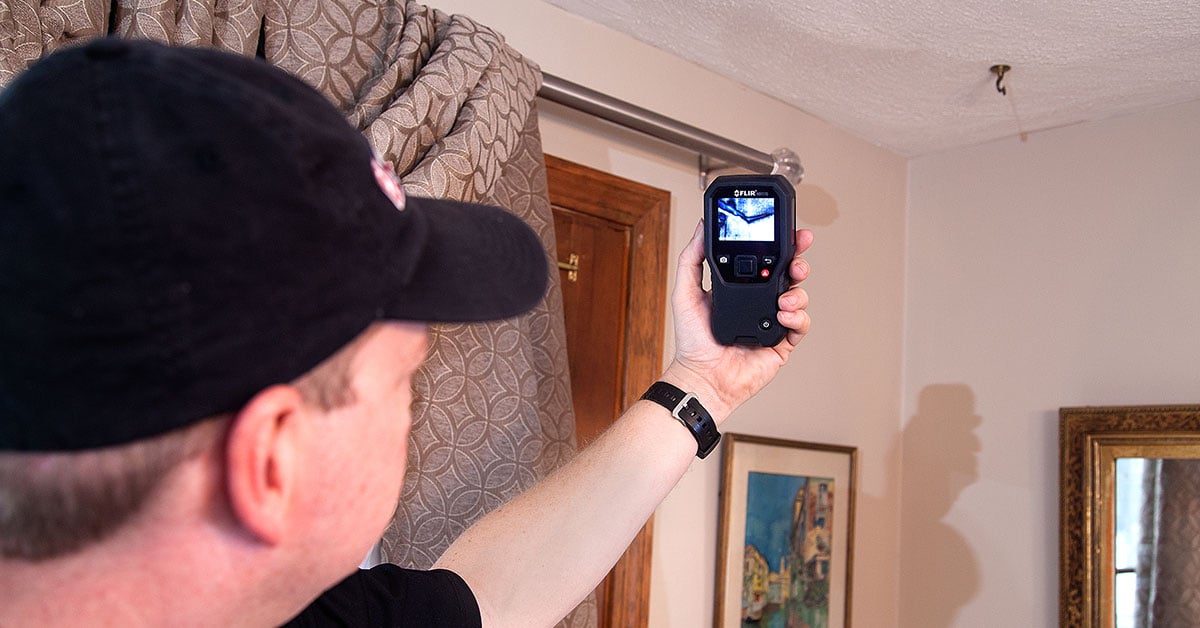Here in the next paragraph you can locate lots of great insights when it comes to Locating water leaks.

Early detection of dripping water lines can alleviate a potential catastrophe. Some tiny water leakages may not be noticeable.
1. Analyze the Water Meter
Examining it is a guaranteed way that assists you uncover leakages. If it moves, that suggests a fast-moving leakage. This suggests you might have a slow leak that could even be below ground.
2. Check Water Consumption
Examine your water costs and also track your water consumption. As the one paying it, you ought to discover if there are any type of disparities. If you detect sudden changes, despite your consumption being the same, it implies that you have leaks in your plumbing system. Keep in mind, your water costs need to drop under the very same array every month. A sudden spike in your bill indicates a fast-moving leak.
On the other hand, a consistent boost each month, despite the exact same practices, shows you have a slow leak that's likewise slowly escalating. Call a plumber to extensively inspect your residential property, particularly if you feel a cozy location on your floor with piping underneath.
3. Do a Food Coloring Examination
When it comes to water usage, 30% comes from toilets. If the shade somehow infiltrates your dish during that time without flushing, there's a leakage between the container as well as dish.
4. Asses Exterior Lines
Do not forget to examine your outdoor water lines also. Test faucets by attaching a yard hose pipe. Needs to water leak out of the link, you have a loose rubber gasket. Change this and make certain all connections are limited. It will certainly help get it properly analyzed and also maintained every year if you have actually obtained a sprinkler system. One small leakage can squander lots of water and also spike your water expense.
5. Check and also Analyze the Circumstance
Home owners should make it a behavior to check under the sink counters and even inside cupboards for any kind of bad odor or mold and mildew development. These two red flags indicate a leak so timely focus is called for. Doing regular inspections, even bi-annually, can conserve you from a significant problem.
More significantly, if you understand your house is currently old, maintain a watchful eye on your heating units, pipes, pipelines and so on. Check for discolorations as well as deteriorating as a lot of home appliances as well as pipes have a life expectancy. They will also naturally degrade due to tear as well as use. Don't wait for it to escalate if you suspect leaking water lines in your plumbing system. Call a professional plumber immediately so you don't wind up with an awful mess in your home.
Early detection of dripping water lines can alleviate a prospective disaster. Some little water leakages may not be noticeable. Inspecting it is a surefire method that helps you uncover leaks. One tiny leakage can squander loads of water and also surge your water bill.
If you suspect dripping water lines in your plumbing system, don't wait for it to rise.
WARNING SIGNS OF WATER LEAKAGE BEHIND THE WALL
PERSISTENT MUSTY ODORS
As water slowly drips from a leaky pipe inside the wall, flooring and sheetrock stay damp and develop an odor similar to wet cardboard. It generates a musty smell that can help you find hidden leaks.
MOLD IN UNUSUAL AREAS
Mold usually grows in wet areas like kitchens, baths and laundry rooms. If you spot the stuff on walls or baseboards in other rooms of the house, it’s a good indicator of undetected water leaks.
STAINS THAT GROW
When mold thrives around a leaky pipe, it sometimes takes hold on the inside surface of the affected wall. A growing stain on otherwise clean sheetrock is often your sign of a hidden plumbing problem.
PEELING OR BUBBLING WALLPAPER / PAINT
This clue is easy to miss in rooms that don’t get much use. When you see wallpaper separating along seams or paint bubbling or flaking off the wall, blame sheetrock that stays wet because of an undetected leak.
BUCKLED CEILINGS AND STAINED FLOORS
If ceilings or floors in bathrooms, kitchens or laundry areas develop structural problems, don’t rule out constant damp inside the walls. Wet sheetrock can affect adjacent framing, flooring and ceilings.
https://www.servicemasterbyzaba.com/blog/how-to-detect-water-leakage-in-walls/

Do you appreciate reading up on Locating water leaks? Post a review down the page. We would be glad to find out your thinking about this blog post. In hopes that you come back again later on. Are you aware of somebody who is serious about the niche? Please feel free to share it. We take joy in reading our article about Leaking water lines.